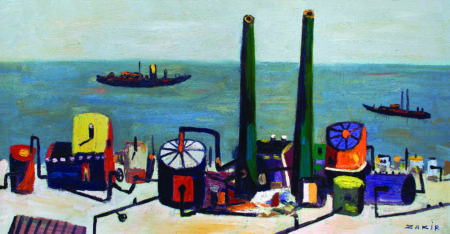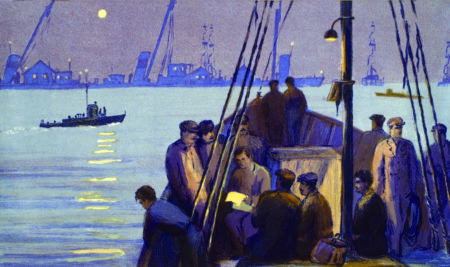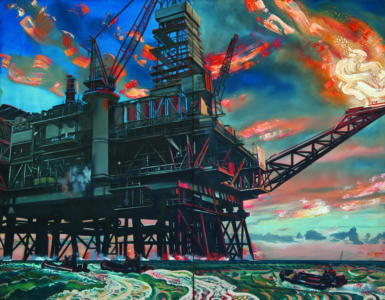Workshop XXIII, Amina Melikova, 20 April 2021
Amina Melikova, the director of Icherisheher Museum Centre, discusses the importance of oil for Azerbaijani art during three key historical periods: pre-revolutionary, Soviet, and independent or modern.
Since ancient times, Azerbaijan, and especially its capital Baku, has been known throughout the world for its oil. Oil was drilled in Azerbaijan for the first time in the mid-19th century, with investors such as the Nobel brothers and the Rothschilds playing a vital role during this period. By the start of the 20th century, Azerbaijan led world oil production.
In the pre-revolutionary period, it was mainly foreign artists who represented the theme of oil. Their work was characterized by realism, such as in the 1886 series of drawings and paintings by Scottish artist William Simpson. Another famous painting of the pre-Soviet era is Bibi-Heybat Oil Fields (1916) by Russian artist Anna Ostroumova-Lebedeva.
Azerbaijani art produced during the Soviet period (1920-1991) paid special attention to the development of the oil industry, following the style of Socialist Realism, the official form of cultural production in the USSR which sought to glorify communist values. Representations of the oil industry from the 1920s through the 1950s thus show consistency in style, with their idealized realism elevating the work of oilmen and their everyday environment. Key artists of this period include Russian-Soviet artists Aleksandr Kuprin and Peter Karpov, as well as Azerbaijani artists such as Maral Rahmanzadeh, Hafiz Mammadov, Taghi Taghiyev and Agha Mehdiyev.
In the 1950s new trends emerged in Azerbaijani art as exemplified in Tofig Javadov’s use of bold colour in his depictions of oil workers. The critique of oil, which emerged in the West in the 1960s and 1970s, in works such as Esso LSD (1967) by Swedish artist Öyvind Fahlström, contrasts with the celebratory take on oil of Azerbaijani artists such as Gazanfar Khaligov and Nadir Gasimov.
Following the end of the Soviet Union and Azerbaijan’s independence in 1991, Azerbaijani artists started to explore new stylistic approaches more freely, while they maintained their interest in the topic of oil. Works by artists such as Zakir Hüseynov, Elshan Sarkhanoghlu, Latafat Mammadova, Tora Aghabayova, Museyib Amirov, Farid Mirzoyev and Intiqam Aghayev explore new forms and depart from the previous romanticisation and monumentalisation of the work of oilmen.
Azerbaijan I Baku I Nobel brothers
I Rothschilds I Socialist Realism I celebration of oil











